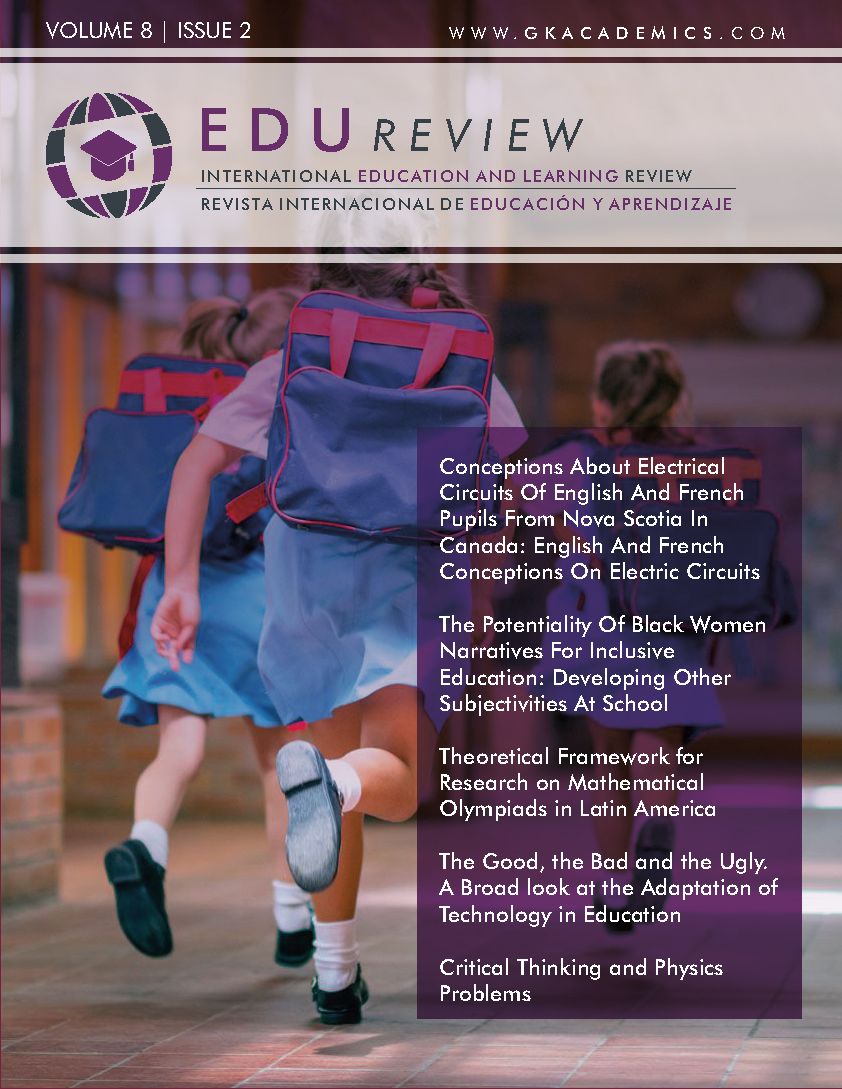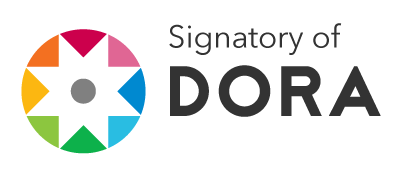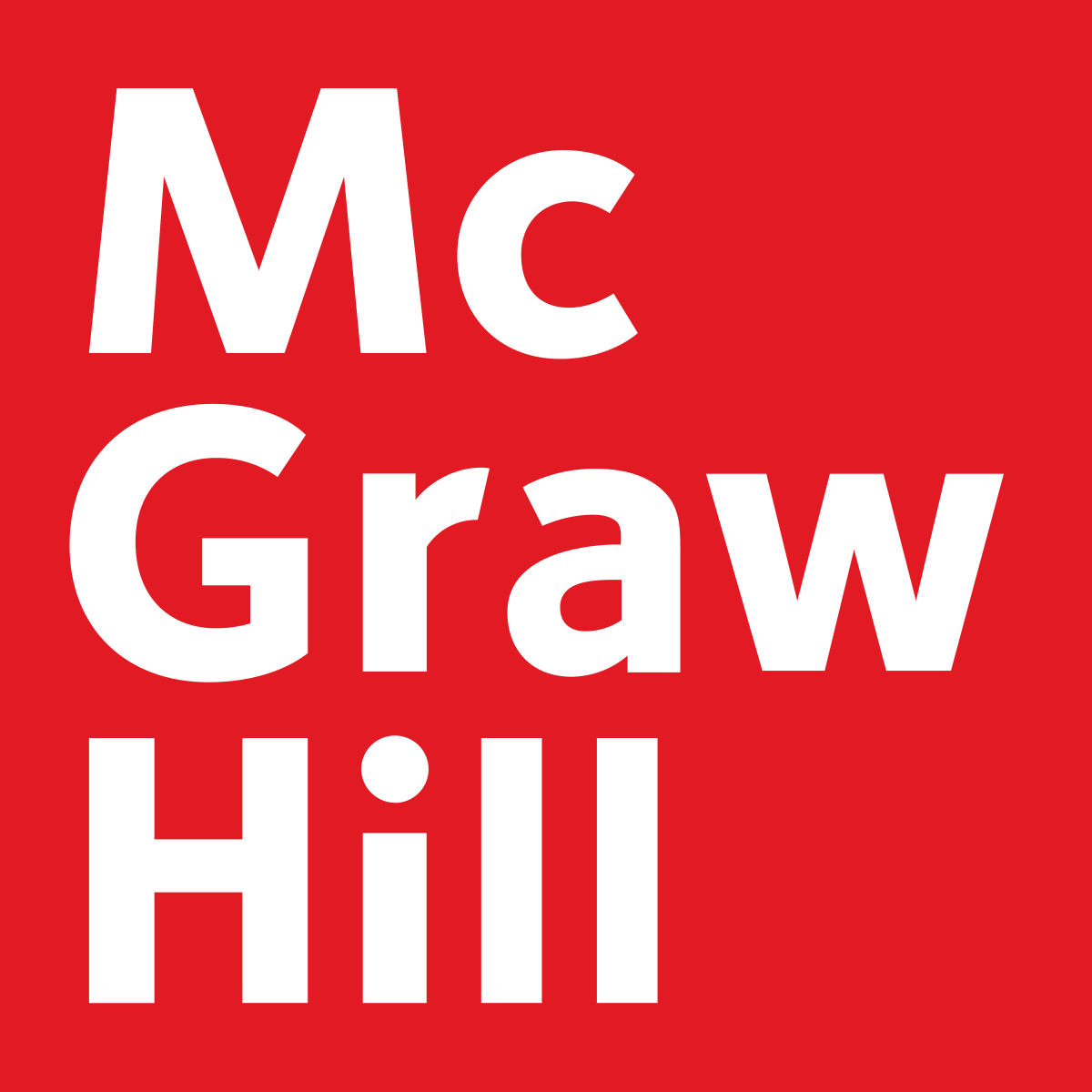Critical Thinking and Physics Problems
DOI:
https://doi.org/10.37467/gka-revedu.v8.2663Palabras clave:
Definitions of critical thinking, CT problems with physics content, CT problems without physics content, Comparison of students`' CT, SurveyResumen
Critical thinking is considered to be one of the most important abilities which help us to solve problems, interpret information or make decisions in everyday life. Every person needs to use critical thinking, therefore, it is important to develop students' critical thinking in all classes including Physics. We summarize various definitions of critical thinking and we describe the survey, where students solve problems whose solution requires critical thinking. We compare students' results to see if they can solve problems without physics content with better successfulness than the problems with physics content and to see how the school attendance impacts its development.
Descargas
Estadísticas globales ℹ️
|
632
Visualizaciones
|
983
Descargas
|
|
1615
Total
|
|
Citas
Dohler, S. (2018). A discrete modification of the Benjamini-Yekutieli procedure. Econometrics and Statistics, 2018(5), 137-147. DOI: https://doi.org/10.1016/j.ecosta.2016.12.002
Facione, P. A. (1990). Critical Thinking: A Statement of Expert Consensus for Purposes of Educational Assessment and Instruction. [Quoted 2019-05-27] Retrieved from: https://lnk.sk/uAL0
Fay, M. P., Proschan, M. A. (2010). Wilcoxon-Mann-Whitney or t-test? On assumptions for hypothesis tests and multiple interpretations of decision rules. Statistics Surveys, 2010(4), 1-39. DOI: https://doi.org/10.1214/09-SS051
Iowa Department of Education. (1989). A Guide to Developing Higher Order Thinking Across the Curriculum. Iowa.
Gavora, P. (1995). Kritické myslenie – prehľad situácie v zahraničí. In: Z. Kolláriková, et al., Výchova ku kritickému mysleniu – teória a prax (pp. 7-12) Bratislava: Štátny pedagogický ústav.
Kosturková, M. (2016). Rozvoj kritického myslenia žiakov stredných škôl. Prešov: Vydavateľstvo Prešovskej univerzity.
OECD. (2018). The Future of Education and Skills. Education 2030. [Quoted 2020-03-31] Retrieved from: https://lnk.sk/cit1
R Core Team. (2018). R: A language and environment for statistical computing. Vienna: R Foundation for Statistical Computing. Retrieved from: https://www.r-project.org
Shapiro, S. S., Wilk, M. B. (1965). An Analysis of Variance Test for Normality (Complete Samples). [Quoted 2020-01-23] Retrieved from: https://lnk.sk/dENU DOI: https://doi.org/10.2307/2333709
ŠPÚ. (2015a). Štátny vzdelávací program nižšie stredné vzdelávanie – 2. stupeň základnej školy. Bratislava. [Quoted 2019-05-27]. Retrieved from: https://lnk.sk/vDJ8
ŠPÚ. (2015b). Štátny vzdelávací program pre gymnáziá (úplné stredné všeobecné vzdelávanie). Bratislava. [Quoted 2019-05-27]. Retrieved from: https://goo.gl/LG8ZcL
ŠPÚ. (2015c). Štátny vzdelávací program: fyzika – nižšie stredné vzdelávanie. Bratislava. [Quoted 2019-05-27]. Retrieved from: https://goo.gl/vBMVo8
Trúsiková, A. (2018). Kritické myslenie a fyzikálne úlohy. Diploma thesis. Bratislava: FMFI UK.
Velmovská, K. (2011). Fyzikálne filmové omyly. Zborník z konferencie Šoltésove dni 2010. Bratislava: FMFI UK, pp. 136–145.
Velmovská, K. (2014). Physics mistakes in movies or the possibility of developing critical thinking in physics classes. Journal of Science Education, 15(1), 37-40.
Descargas
Publicado
Cómo citar
Número
Sección
Licencia
Los autores/as que publiquen en esta revista aceptan las siguientes condiciones:
- Los autores/as conservan los derechos de autor.
- Los autores/as ceden a la revista el derecho de la primera publicación. La revista también posee los derechos de edición.
- Todos los contenidos publicados se regulan mediante una Licencia Atribución/Reconocimiento-SinDerivados 4.0 Internacional. Acceda a la versión informativa y texto legal de la licencia. En virtud de ello, se permite a terceros utilizar lo publicado siempre que mencionen la autoría del trabajo y a la primera publicación en esta revista. Si transforma el material, no podrá distribuir el trabajo modificado.
- Los autores/as pueden realizar otros acuerdos contractuales independientes y adicionales para la distribución no exclusiva de la versión del artículo publicado en esta revista (p. ej., incluirlo en un repositorio institucional o publicarlo en un libro) siempre que indiquen claramente que el trabajo se publicó por primera vez en esta revista.
- Se permite y recomienda a los autores/as a publicar su trabajo en Internet (por ejemplo en páginas institucionales o personales), una vez publicado en la revista y citando a la misma ya que puede conducir a intercambios productivos y a una mayor y más rápida difusión del trabajo publicado (vea The Effect of Open Access).













